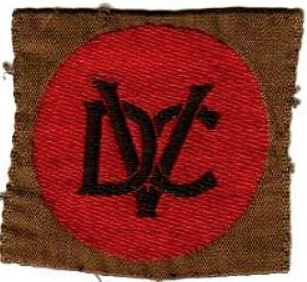Difference between revisions of "3rd (Swan) VDC Battalion"
From Our Contribution
(→Battalion Personnel) |
(→Battalion Personnel) |
||
| Line 34: | Line 34: | ||
* [[George Graham Pike]] 26 Apr 1942 - 27 Mar 1944 | * [[George Graham Pike]] 26 Apr 1942 - 27 Mar 1944 | ||
* [[David Langus Pumphrey]] 22 Apr 1942 - 27 Feb 1943 | * [[David Langus Pumphrey]] 22 Apr 1942 - 27 Feb 1943 | ||
| − | * [[Robert James Ralphs]] | + | * [[Robert James Ralphs]] 26 Apr 1942 - 27 Feb 1943 |
* [[Eldred James Saw]] 26 Apr 1942 - 27 Feb 1943 | * [[Eldred James Saw]] 26 Apr 1942 - 27 Feb 1943 | ||
* [[Fredrick Mark Thatcher]] 26 Apr 1942 - 17 Dec 1942 | * [[Fredrick Mark Thatcher]] 26 Apr 1942 - 17 Dec 1942 | ||
Revision as of 01:37, 19 April 2021
 | |
Brief History
Volunteer defence Corps (VDC) Battalions were initially raised outside the military framework by the RSL who were keen to be involved in any defence of Australia. Formed in July 1940 they had no formal role, until they were taken over by the Army and incorporated in the CMF on 15 May 1941. Other civilian units included the Vulnerable Points Guard and teh Post Office Volunteer Corps. Once taken over they were tasked with being prepared to strengthen/reinforce Garrison Battalions who were formed to contribute to the defence of Australia; provide staff for internment camps; and guard vulnerable points. Original recruitment was men with previous Imperial Military Service, those under 60 being available for full time duties. In February 1940 4,464 men were enlisted in Western Australian VDC units. Australia wide there were 110 VDC Battalions in October 1942. Australia wide there were 49 fatalities amongst VDC personnel, with one in Western Australia.
On call out, their main role would be to form into platoons to provide active and passive defence of their area while manning road blocks, demolishing bridges and other areas if necessary and as a last resort to implement guerilla warfare if the area was overrun. When the troops returned from the Middle East, VDC units were provided with conventional training and a role in the August 1942 defence plan. The 3rd (Swan) VDC Battalion was to concentrate at Reabold Hill in City Beach or at East Fremantle depending on the direction from which the threat came. In November 1943 new VDC 'shadow units' were formed for each coast and AA unit. 'B' 'C' and 'D' Companies of the 3rd VDC Battalion formed the 22nd Heavy Anti Aircraft Battery (VDC), while 'A' and 'E' Companies joined others to form the 29th Heavy Anti Aircraft Battery (VDC).. 'F' Company 3rd (Swan) VDC Battalion was formed into Leighton Battery (VDC). In September 3rd VDC Bn (Swan) had become Heavy Anti Aircraft Wing to control all sub units manning the heavy anti aircraft guns. In December 22 HAA Battery (VDC) was placed in reserve and 29 HAA Battery was reduced to two troops in February, and to one in April 1945. HAA Wing was placed in reservein May 1945.
By early 1945 the threat was low enough that the VDC units were placed in reserve. Some VDC units continued to parade without military assistance, and they were not formally disbanded until mid-1946. Members of the VDC were awarded the Australian Service Medal 1939-45 for three years part time service. Some who served full time qualified for the War Medal 1939-45.
Battalion Personnel
- Victor Ross Anderson 26 Apr 1942 - 28 Feb 1943
- Francis Thomas Briggs 26 Apr 1942 - 17 Dec 1942
- Harold George Dyson 26 Apr 1942 - 27 Feb 1943
- Cecil James Talbot Eivers 8 Sep 1944 - 15 Oct 1945
- Raymond Foster 13 Jun 1942 - 27 Feb 1943
- Edgar Walter Gale 24 Apr 1942 - 25 Feb 1943
- Reginald Robert Kennedy 26 Apr 1942 - 28 Feb 1943
- Emanuel Mills 18 Apr 1943 - 27 Feb 1943
- John Edward Roland Pailthorpe 26 Apr 1942 - 27 Feb 1943
- Clement Edward Pike 26 Apr 1942 - 27 Feb 1943
- George Graham Pike 26 Apr 1942 - 27 Mar 1944
- David Langus Pumphrey 22 Apr 1942 - 27 Feb 1943
- Robert James Ralphs 26 Apr 1942 - 27 Feb 1943
- Eldred James Saw 26 Apr 1942 - 27 Feb 1943
- Fredrick Mark Thatcher 26 Apr 1942 - 17 Dec 1942
Notes